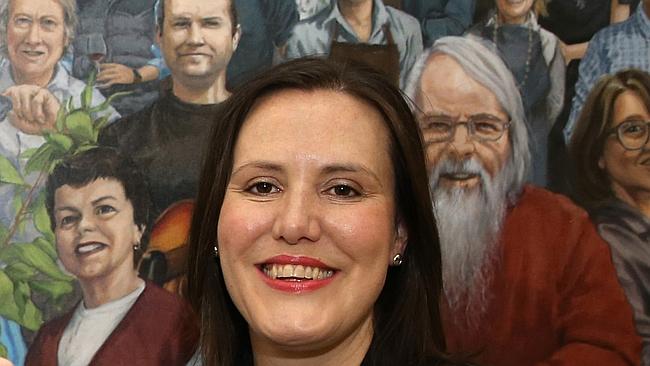By Joseph Ciolli
- Large speculators most bearish since 2013 on ‘fear gauge’
- S&P 500 hit fresh all-time high intraday before trimming gains
(Bloomberg) —
Professional speculators are making record bets in volatility markets that U.S. stocks will keep rallying.
Hedge funds and other big traders tracked by the Commodity Futures Trading Commission have pushed net short positions on CBOE Volatility Index futures to 115,000 contracts, the most since 2013, (see chart) data compiled by Bloomberg show. Shorting volatility is effectively a bet equity prices will rise since the VIX and stocks move in opposite directions 80 percent of the time.

The wagers were mixed Tuesday as the VIX climbed 1.4 percent to 11.66 after wiping out a 4.2 percent drop. The S&P 500 rose less than 0.1 percent to 2,181.74 at 4 p.m. in New York. The benchmark gauge for American equity climbed in four of the last five days to push its 2016 increase to 6.7 percent and its gain from February’s low to 19 percent.
The index was little changed near an all-time high as declines in commodity shares and retailers offset gains in health-care and technology stocks spurred by corporate earnings. The Nasdaq Composite Index increased 0.2 percent to a record for the second time in three sessions, and the Dow Jones Industrial Average added 3.76 points to 18,533.05. About 6 billion shares traded hands on U.S. exchanges, 14 percent below the three-month average.
Even with the advance, moves in stocks over the last month have been muted. The S&P 500 has failed to rise or fall more than 1 percent in either direction for 22 straight days, the longest such streak since 2014. The lack of price swings had sent the CBOE Volatility Index to a more than two-year low amid a better-than-expected corporate earnings season and economic data that showed signs of improvement.
“Each time volatility starts coming out, you have policy makers coming and crushing it back down,” Michael Kelly, New York-based global head of multi-asset strategy at PineBridge Investments, which oversees over $80 billion, said in an interview. “People are learning, you have protection underneath you.”
The drop in volatility has created such a downdraft in the prices of VIX-linked exchange-traded products that two securities carried out a reverse split Tuesday to increase their per-share value. The iPath S&P 500 VIX Short-Term Futures ETN and the iPath S&P 500 VIX Mid-Term Futures ETN both enacted 1-for-4 splits after shares tumbled 54 percent and 14 percent this year, respectively.
In the past 30 days, four VIX-related ETPs have declared reverse splits, the most in history, according to data compiled by Sundial Capital Research Inc.
“VIX positioning went from incredibly bullish back in February, when the world was coming to an end, to shorts at all time lows,” Michael Purves, chief global strategist at Weeden & Co LP in Greenwich, Connecticut, said by phone. “It’s crazy.”
While Purves largely attributes the VIX’s current suppressed level to the Federal Reserve’s willingness to reassure the market in times of turbulence, he also cites improving economic data. Citigroup Inc.’s U.S. Economic Surprise Index late last month hit its highest level since September 2014.
A report today showed productivity of American workers unexpectedly declined for a third quarter, consistent with lackluster efficiency that’s characterized the economic expansion. July payrolls data that beat estimates on Friday bolstered confidence in the U.S. economy, calming concerns following recent disappointing readings on growth in the first half of this year.
Stocks have also benefited from better-than-forecast earnings this season, particularly among technology companies. With about 90 percent of S&P 500 members having posted results, 77 percent have beaten profit predictions and 56 percent have topped sales projections.
Analysts have tempered their estimates for a decline in second-quarter net income to 2.7 percent, from a 5.8 percent drop less than a month ago. Forecasts for the current quarter ending in September have turned negative, indicating a sixth straight period of falling profits, the longest since the financial crisis. Sliding earnings are causing valuations to jump, with the benchmark’s price-earnings ratio last month climbing above 20 for the first time since 2009.
Among shares moving on corporate news, Endo International Plc soared 22 percent, the steepest climb since November 2013, after the drugmaker’s results beat analysts’ estimates. Microchip Technology Inc. added 7.1 percent to a record as its sales and profit outlook exceeded predictions.
Gap Inc. lost 6.3 percent, the most in three months, after comparable sales last month missed analysts’ estimates and the company provided some cautious commentary on the second half of the year. Target Corp. fell 3.2 percent after Cleveland Research lowered its estimates for the retailer’s same-store sales and earnings, saying customer traffic softened in July.









